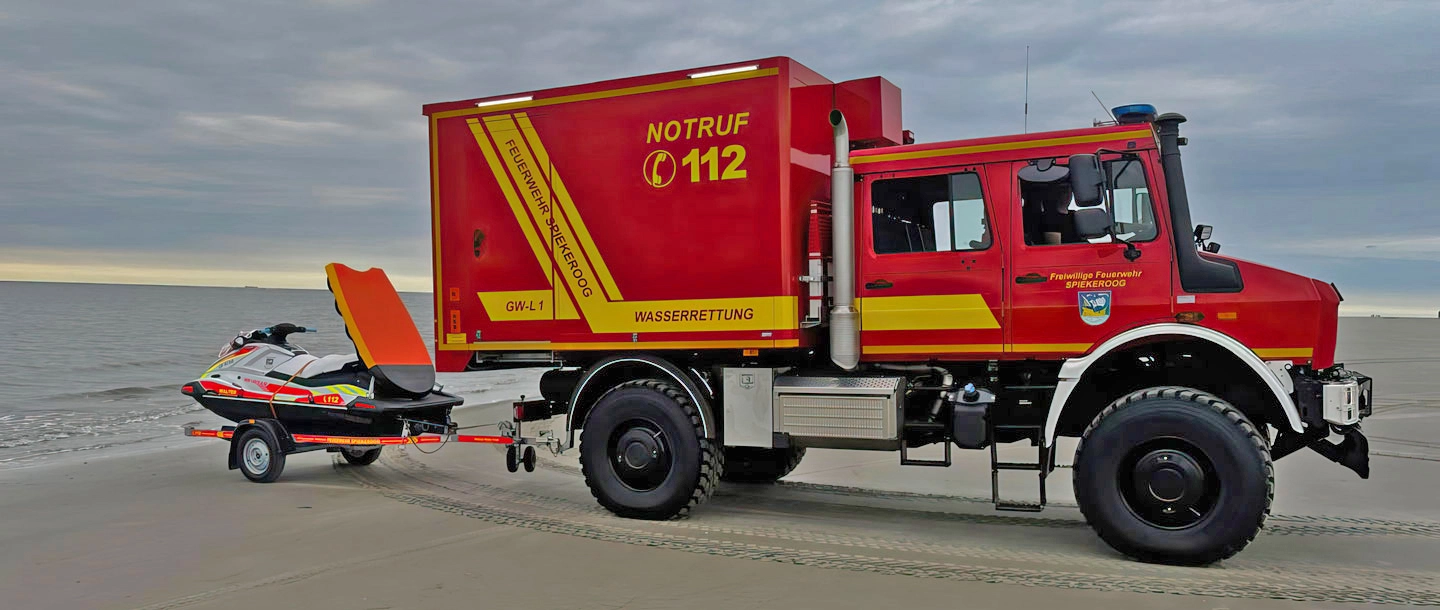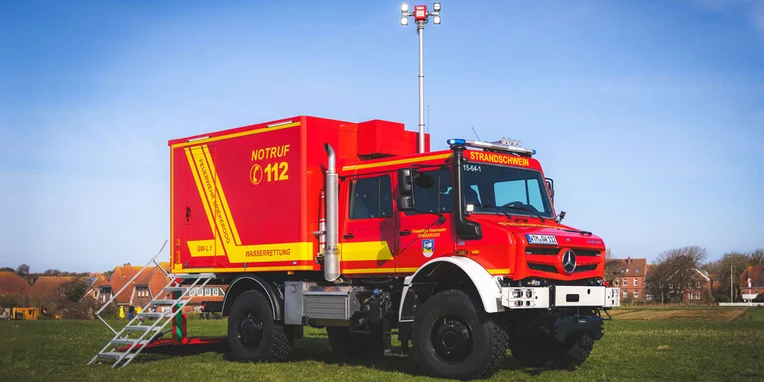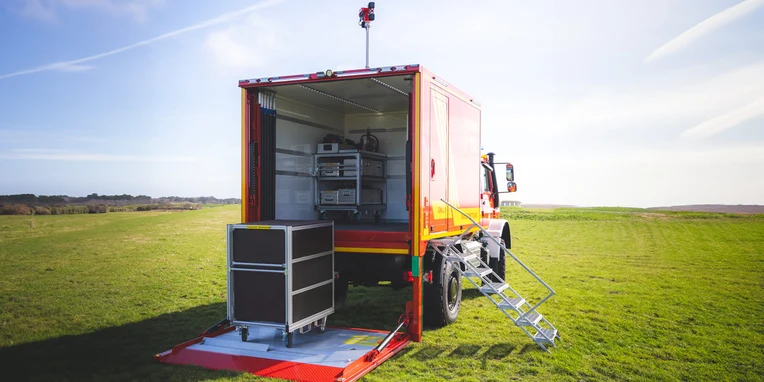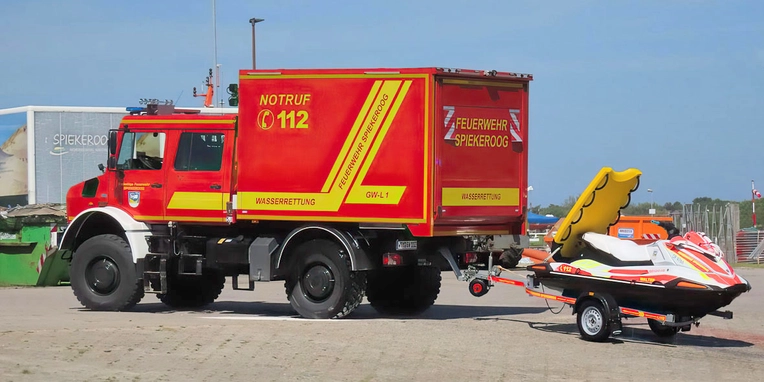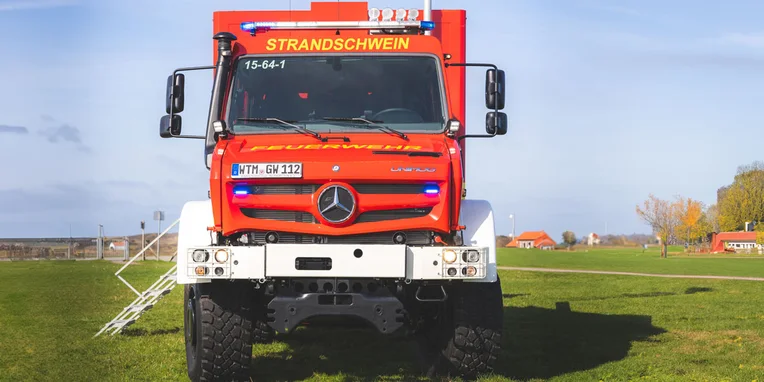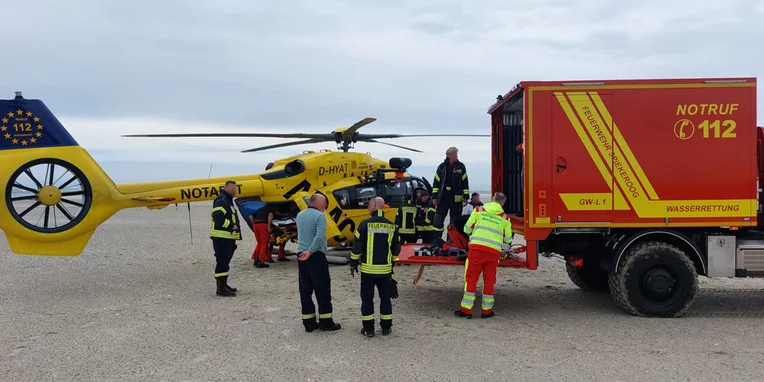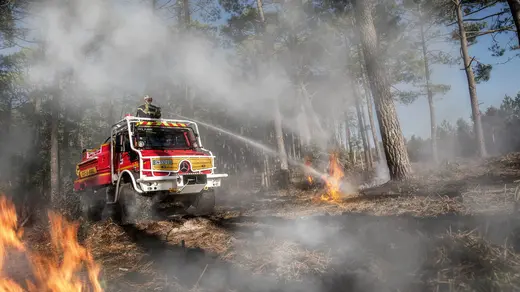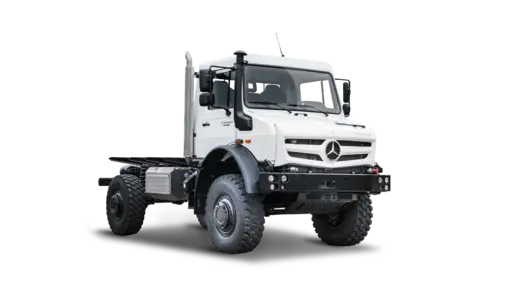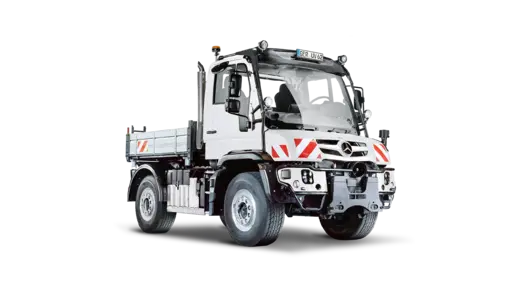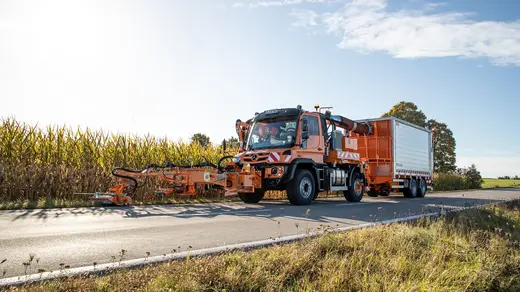The Unimogs of the Spiekeroog volunteer fire brigade master firefighting and logistics tasks.
The North Sea islands call for multifunction vehicles. The Spiekeroog voluntary fire brigade uses a tanker firefighting vehicle (TLF-2000) and logistics equipment truck (GW-L), both based on the Unimog U 5023. They put their trust in the vehicles' flexible applications and reliable handling in extreme conditions. The multi-talented GW-L comes with a modular roller-shutter container system that could save the municipality a great deal of money in the future.
The other side of paradise.
Romantic dunes, idyllic beaches, seemingly endless salt marshes: the North Sea island of Spiekeroog is a tiny piece of paradise in the middle of the Wadden Sea. The municipality of 800 people has banned motorised private transport. Nature rules here. It’s a quiet place. But not always.
Wildfires, floods, sea rescue, evacuation: incidents such as these are the turbulent side of the 18.25 km² island. It is usually hidden from tourists who flock to Spiekeroog for its picturesque landscape, but not from the islanders of the voluntary fire brigade.
And inhabitants of Germany's far north know just how to cope with such extreme situations. The Unimog has been the firefighters' dependable choice of vehicle for decades.
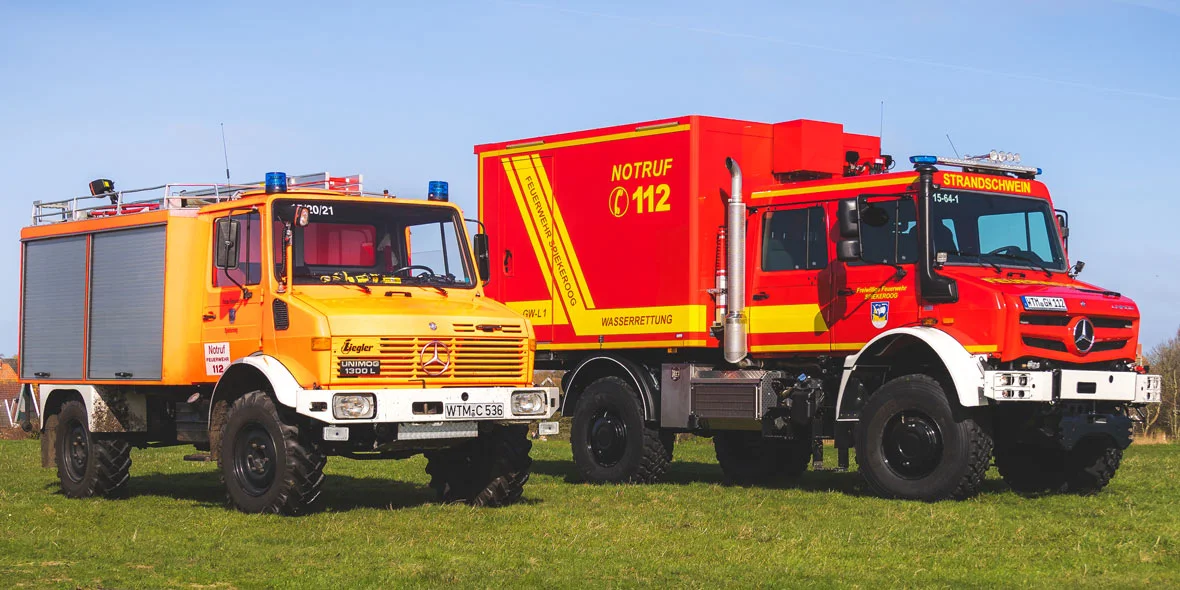
Unimog since 1980.
The 44 active firefighters and 18 members of the youth fire brigade have a total of four vehicles at their disposal. Two of them are Unimog U 5023 models: one 2000-litre tanker fire-fighting vehicle (TLF-2000) and another model with a crewcab used as a logistics equipment vehicle (GW-L).
“The Unimog has always looked after the fire brigade”, says Spiekeroog's chief municipal firefighter Claas Warenski. The old Unimog U 1300 L named Heidetanker, which had been working in Spiekeroog since the 1980s, was actually due to be retired in 2007. But the whole team struggled to give up the old warhorse that had served them so faithfully until late in life. However, in May 2024, Heidetanker made room for a new GW-L based on a Unimog U 5023.
Do you want to find out more about the extreme off-road Unimog?
A logistical marvel loaded with jet skis.
The reason for the new purchase is recorded in the fire service requirements plan. “Only vehicles that can easily get the two rescue watercrafts into the water quickly and safely come into consideration”. A rescue watercraft is, in layman's terms, a jetski. The jetskis used on Spiekeroog are called Frieda and Walter.
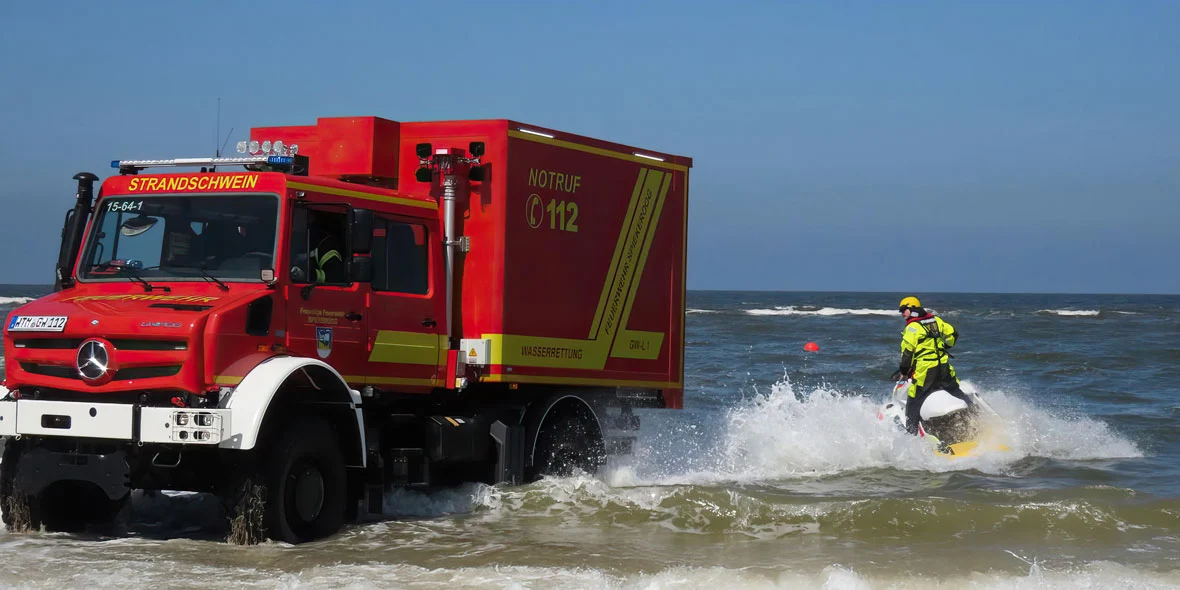
“We need them from time to time”, says the chief municipal firefighter. “For example, if kite surfers are blown off course, a dinghy or sailing boat capsizes or people get lost walking on the mudflats in the dark.” Our pilots can get going without delay thanks to the Unimog. “It works brilliantly, even when the sea is rough.”
From the point of view of the northern rescue experts, there were only a few vehicles with the necessary fording depth of up to 1.2 m, combined with a payload of around 3,500 kg, that could still make progress on sandy ground without any problem and continue to provide such a highly flexible range of applications: “It could only be the Unimog”, says Claas Warenski, “that was clear from the start”.
It could only be the Unimog.
That was clear from the start.
Claas Warenski, chief municipal firefighter, Spiekeroog voluntary fire brigade
Everything under control.
“You can't just drive to the water here like you can on the Baltic Sea”, explains deputy chief municipal firefighter Kai Kröger. “Due to the tides, the ground here is different every day. There's a tidal channel here, a stream there, sometimes holes too.” Well-trained operators and superior technology are needed to overcome this difficult terrain.
The TireControl plus tyre pressure control system installed in the Unimog can be adjusted to different surfaces in mere seconds at the touch of a button. There are three different modes available: Road, Sand and Rough. Alternatively, the tyre pressure can be manually regulated. And that’s exactly what the Spiekeroog fire brigade decided to do. The GW-L is perfectly adjusted to the local conditions at a pressure of 2.6 bar. The same goes for the manual gearbox. It can be switched from automatic to manual to guarantee more individual scope when manoeuvring and react to hard and soft island surfaces in no time at all. “We can dance over the beach as light as a feather”, jokes Claas Warenski.
Even though the GW-L might look a bit hefty on the narrow roads of Spiekeroog, the all-wheel-drive all-rounder is worth every centimetre of bulk. “We tried to get it stuck”, the fire department boss reports of the orientation test drive provided by Unimog general distributor Schelling Nutzfahrzeuge. “We did not succeed”.
